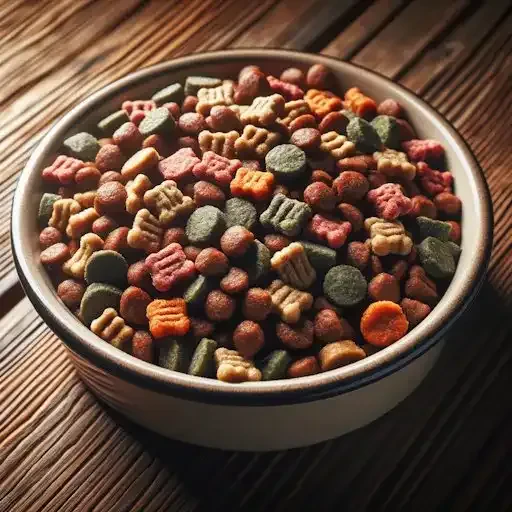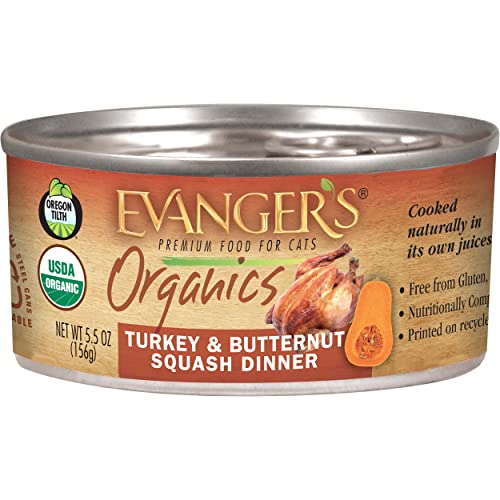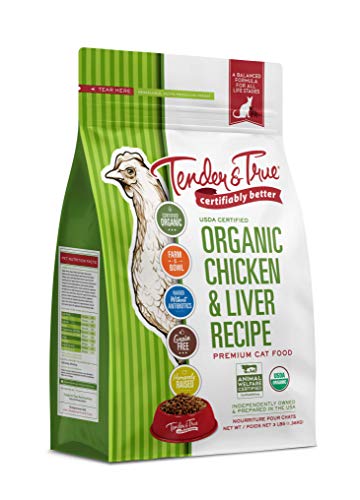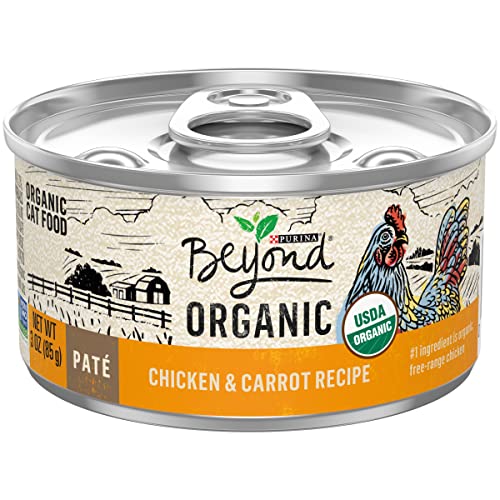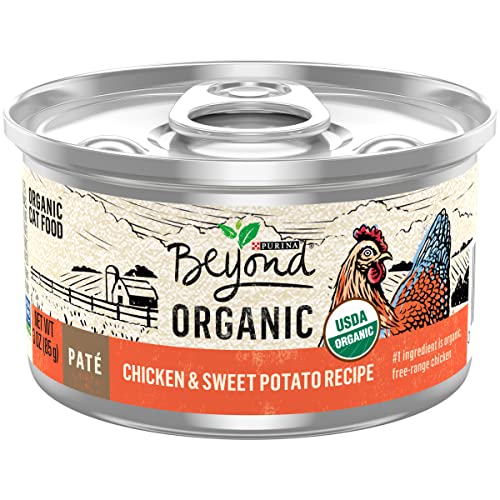Navigating the pet food aisle can feel like deciphering a secret code, especially when it comes to labels proclaiming “Organic” and “Natural.” If you’re a cat owner striving to provide the best nutrition for your feline companion, you’ve likely encountered these terms and perhaps felt a pang of confusion. Are these just marketing buzzwords, or do they represent genuinely healthier choices for your beloved cat? You’re not alone if you’ve asked yourself: “Organic vs. Natural cat food – which should I choose?”
The desire to feed our cats well stems from a place of deep affection and responsibility. We want them to be healthy, vibrant, and live long, happy lives. Food is foundational to this well-being, so it’s natural to want to make informed decisions about what we put in their bowls. However, the sheer volume of options and the complex terminology can be overwhelming. This article is designed to cut through the confusion and shed light on the real differences between “organic” and “natural” cat food. We’ll delve into what these labels actually mean, exploring their potential benefits and drawbacks. By understanding the nuances, you’ll be empowered to make a confident and informed choice that best suits your cat’s individual needs and your own priorities. We’ll unpack the definitions, weigh the pros and cons, and ultimately guide you toward selecting a cat food that truly nourishes your feline friend from the inside out.
Let’s begin by untangling the concept of “organic” cat food. When you see the term “organic” on a pet food label, it’s not just a feel-good marketing claim; it’s often tied to a legally defined and regulated set of standards, particularly in regions like the United States where the USDA (United States Department of Agriculture) sets the rules. To truly understand “organic,” it's essential to think about certified organic ingredients. These ingredients are the cornerstone of organic cat food and are produced under stringent guidelines designed to promote environmental sustainability and animal welfare. The most crucial aspect of organic ingredients is how they are grown and raised. Plants used in organic cat food must be cultivated without the use of synthetic pesticides and fertilizers. This means farmers rely on natural methods for pest control and soil enrichment, fostering a healthier ecosystem. Furthermore, organic crops are non-GMO, meaning they are not genetically modified organisms. This addresses concerns some owners have about the potential long-term effects and ethical implications of GMOs in pet food.
Beyond plant-based ingredients, the “organic” label also extends to animal-derived components, if present. If a cat food claims to be organic and contains meat or poultry, the animals from which these ingredients are sourced are often subject to specific raising requirements. While standards can vary slightly, these typically include access to pasture, humane living conditions, and being fed organic feed themselves. The whole process, from farm to bowl, is overseen by certifying agencies. These agencies ensure that pet food manufacturers adhere to the established organic standards. Look for official seals and labels like "USDA Organic" or "Certified Organic" – these are your signals that the product has undergone scrutiny and meets the required criteria. It's worth noting that organic labeling can be tiered, such as "100% organic," "organic," and "made with organic ingredients," each with slightly different thresholds for the percentage of organic content. Understanding these nuances can help you further refine your choices within the organic category.
What are the potential upsides of choosing organic cat food? One of the most compelling benefits is the reduced exposure to synthetic pesticides and fertilizers. While the long-term health impacts of low-level pesticide exposure in pet food are still being studied, many owners are drawn to organic food as a way to minimize this exposure, particularly for cats who may be more sensitive or have compromised immune systems. The "no GMOs" aspect is another draw for owners who prefer to avoid genetically modified ingredients in their pet's diet, regardless of the scientific consensus on their safety. Beyond these specific points, some argue that organic farming practices, with their emphasis on soil health and sustainable agriculture, may lead to ingredients that are inherently of higher quality, although this is a complex and nuanced point, and not always directly provable in the final food product’s nutritional analysis. Finally, choosing organic can align with broader environmental values. Organic farming is often considered more environmentally friendly due to its reduced reliance on synthetic chemicals and its focus on biodiversity and soil conservation. For ethically conscious cat owners, supporting organic pet food brands can be a way to contribute to more sustainable agricultural practices.
However, it’s crucial to consider the potential drawbacks of organic cat food as well. The most significant hurdle for many is the higher cost. Organic farming and production methods are often more labor-intensive and can yield lower outputs compared to conventional agriculture. Certification processes also add to the expense. These factors translate into a higher price tag for organic pet food, which may not be feasible for all budgets. Another potential limitation is availability. While organic pet food options are becoming more widespread, they may still be less readily available than conventional or even "natural" options, particularly in certain geographic locations or smaller pet stores. Perhaps the most important point to remember is that “organic” on its own doesn’t automatically equate to "best" or "most nutritious" for every cat. While organic standards focus on ingredient sourcing and production methods, they don't inherently guarantee that a food is optimally formulated for your individual cat's specific dietary needs. Ingredient quality and the overall nutritional formulation of the food are still paramount, regardless of its organic status. An organic cat food could still be less palatable to a picky eater or might not be the ideal choice for a cat with specific health conditions or dietary requirements.
Now, let's turn our attention to "natural" cat food. This is where things become a bit more… well, “natural,” in the sense of being less rigidly defined. Unlike “organic,” the term “natural” in pet food labeling is considerably less regulated and often interpreted more loosely by manufacturers. Generally, “natural” cat food aims to emphasize minimally processed ingredients. The core concept often revolves around the absence of artificial additives. This typically means no artificial colors, flavors, or preservatives. These are often perceived as less desirable ingredients by owners seeking a cleaner or simpler diet for their cats. However, it’s vital to understand what “natural” doesn’t guarantee. "Natural" cat food can still contain ingredients that were grown using synthetic pesticides or are genetically modified. The focus of “natural” claims typically centers around processing and the addition of artificial substances during manufacturing, not necessarily the sourcing or growing methods of the core ingredients themselves.
Crucially, unlike “organic,” there isn't a strict, legally binding definition of "natural" in pet food in many regions, like the robust framework that exists for organic certification. While organizations like AAFCO (Association of American Feed Control Officials) provide some guidelines, these are generally less prescriptive than organic regulations. AAFCO, for instance, states that "natural" means "a feed or feed ingredient derived solely from plant, animal or mined sources, either in its unprocessed state or having been subject to physical processing, heat processing, rendering, purification, extraction, hydrolysis, enzymolysis or fermentation, but not having been produced by or subject to a chemically synthetic process and not containing any additives or processing aids that are chemically synthetic except in amounts that are no more than might occur unavoidably in good manufacturing practices." While this provides a general framework, it leaves room for interpretation, and the practical application can vary across brands.
Despite the looser definition, “natural” cat food does offer potential benefits. The emphasis on minimally processed ingredients resonates with owners who prefer a less processed diet for their cats, perhaps viewing it as closer to what a cat might eat in a more "wild" or ancestral setting, even though domestic cat diets are vastly different from their wild counterparts. The avoidance of artificial additives is a key draw for many. Concerns about potential sensitivities or allergies to artificial colors, flavors, and preservatives, or simply a preference for “cleaner” ingredient lists, drive many owners towards “natural” options. Often, “natural” cat food sits in a price range that is more affordable than strictly organic options. This can make it an appealing middle-ground choice for owners seeking some perceived benefits without the premium cost of organic. Finally, “natural” cat food is generally very widely available. You’ll find “natural” options in most pet stores and even in many supermarkets, making it a convenient choice for many cat owners.
However, it’s essential to be aware of the potential downsides of “natural” cat food claims. The very fact that “natural” is a loosely defined term can be misleading. The “natural” marketing label can sometimes create a halo effect, implying a higher level of overall quality or ethical sourcing that may not actually be present. Just because a food is labeled “natural” doesn't guarantee superior ingredient quality beyond the absence of artificial additives. Crucially, “natural” cat food may still contain conventionally grown ingredients. This means that pesticides and GMOs could still be present in the base ingredients, even if no artificial additives are added during the food processing itself. Therefore, if your primary concern is avoiding pesticides or GMOs, “natural” might not fully address those concerns. Just like “organic,” remember that “natural” labeling alone doesn’t automatically guarantee superior nutrition or health benefits. The overall formulation, the quality of the core ingredients (beyond just processing and additives), and how well it suits your individual cat's needs are still the most critical factors to consider, irrespective of the “natural” claim.
So, how do “organic” and “natural” cat food truly stack up against each other? Let’s draw a direct comparison. In terms of regulation and definition, “organic” has a strict, legally defined framework, while “natural” is loosely defined and more open to interpretation. Regarding pesticides and fertilizers, organic food prohibits synthetic versions, while natural food may contain ingredients grown with them. When it comes to GMOs, organic food prohibits them, whereas natural food may contain GMO ingredients. For artificial additives, organic food generally prohibits them due to organic production standards, while “natural” typically aims to exclude them as its primary focus. In terms of processing, organic food may have some restrictions on processing methods related to maintaining organic integrity, while “natural” generally emphasizes minimal processing in a broader sense. Cost is a significant differentiator, with organic food generally being more expensive, while natural options are often moderately priced. Finally, availability tends to be lower for organic cat food compared to the wider availability of natural cat food.
Ultimately, the “best” choice between organic and natural cat food isn’t a universal answer; it’s deeply personal and dependent on your cat’s specific needs and your own priorities as an owner. When making your decision, start by considering your cat’s individual profile. Factors like age, health status, and activity level all influence their nutritional requirements, regardless of whether you choose organic, natural, or conventional food. A kitten’s nutritional needs are vastly different from a senior cat's, and a highly active cat will require more calories and energy than a less active one. If your cat has any known sensitivities or allergies, these should be your primary focus. Ingredient sensitivities are far more relevant than whether a food is labeled “organic” or “natural.” Carefully scrutinize ingredient lists for potential allergens, and consult with your veterinarian if you suspect a food allergy. And let's be honest, palatability matters! Neither “organic” nor “natural” labels guarantee that your cat will actually enjoy eating the food. A nutritious food is useless if your cat refuses to eat it.
Beyond your cat’s needs, reflect on your own personal priorities. Budget is a practical consideration for every cat owner. Organic food is typically more expensive, and you need to determine if this higher cost fits within your budget. Ethical concerns often play a role in food choices. If environmental impact and sustainable farming practices are important to you, organic cat food often aligns more closely with these values. If your priority is simply minimizing processing in your cat’s diet, “natural” food often appeals to this, but remember to read ingredient labels carefully to ensure the overall processing level meets your expectations. Consider whether you are more concerned about artificial additives in cat food, or about potential exposure to pesticides and GMOs in the base ingredients. Your answer to this question might steer you more strongly toward “natural” (if
It's absolutely crucial to look beyond just the “organic” and “natural” labels. The ingredient list is arguably
Ultimately, there is no single “best” cat food that fits every feline. The most effective approach is to become an informed consumer. Read ingredient lists carefully, understand your cat's individual needs, align your choices with your personal values and budget, and don't be solely swayed by marketing hype. When choosing, always read the ingredient list first and foremost. This will give you the clearest picture of what’s actually in the food, beyond any label claims. Understand your cat’s specific dietary requirements based on their age, health, and activity levels. Factor in your own budget and ethical considerations to find a food that aligns with your priorities. Don’t let marketing buzzwords alone dictate your decision. Look beyond the front of the bag and understand what “organic” and “natural” actually signify (and what they don’t). If you decide to switch your cat to a new food, always transition gradually over a week or so to minimize the risk of digestive upset.
To illustrate, consider a few scenarios. If your budget is a primary concern, but you still want to avoid artificial additives in your cat’s food, a well-formulated “natural” cat food might be a very good option, offering a balance of affordability and cleaner ingredients. If you have a strong concern about pesticides and GMOs and your budget allows, exploring certified organic cat foods would be a logical step, understanding the price premium that comes with it. If your cat has known food allergies or sensitivities, your primary focus should be on finding a limited ingredient diet that effectively manages their allergies, regardless of whether it’s labeled “organic” or “natural.” The focus here shifts to specific ingredients rather than broad label claims.
In conclusion, both “organic” and “natural” cat food options offer distinct features and appeal to different owner priorities. “Organic” emphasizes stringent sourcing and production standards, particularly regarding pesticides, GMOs, and environmental impact, often at a higher price point. “Natural” focuses primarily on minimizing processing and excluding artificial additives, usually at a more moderate cost and with wider availability, but with less rigid ingredient sourcing standards. There’s no definitive winner in the “organic vs. natural” debate. The “best” cat food for your feline companion is ultimately the one that keeps them healthy, happy, and thriving, while also aligning with your budget and values. Equip yourself with knowledge, take the time to research, read labels carefully, and choose with confidence, knowing you are making an informed decision to nourish your beloved cat. Your cat’s well-being is worth the effort of understanding these labels and making a thoughtful choice.
